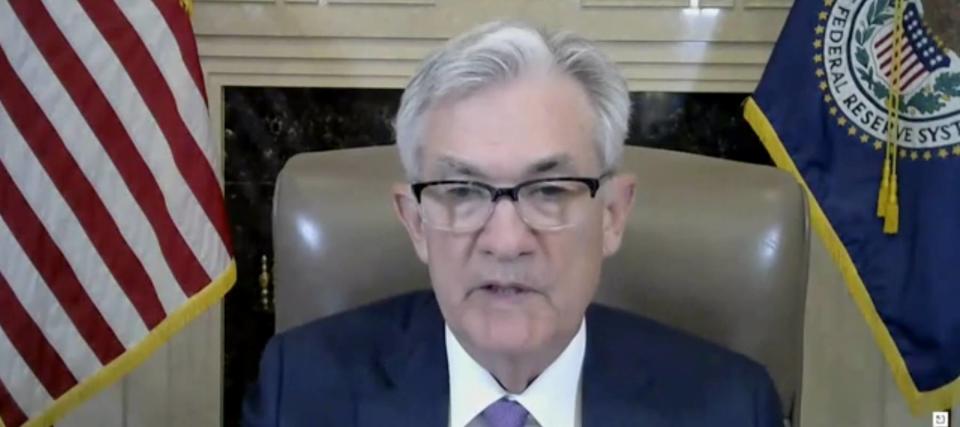Did the Fed's Powell just tap the brakes on rising mortgage rates?

Federal Reserve Chairman Jerome Powell doesn't see any good reason why average 30-year mortgage rates pole-vaulted over the 3% line in the last week, to the highest level since mid-June.
Rates have been following along as the interest on Treasury bonds has skyrocketed due to worries that an improving economy will stoke inflation. But Powell tells members of Congress that inflation is still "soft" and that the road ahead for the economy is "highly uncertain."
Will his reassurances hit the brakes on mortgage rates, even help push them back down? Experts say borrowers who want to be on the safe side should lock one of today's mortgage rates — because they could go even higher.
What's been happening to mortgage rates?

Just weeks after dipping to new all-time lows, mortgage rates have suddenly come roaring back. On Tuesday, Mortgage News Daily had 30-year fixed-rate mortgages averaging 3.10% — way up from 2.86% about a week and a half ago, on the Friday before Presidents Day weekend.
For borrowers, "it's time to wake up," writes Matthew Graham, MND's chief operating officer.
Mortgage rates tend to track the yield (interest) on the 10-year Treasury note, which has soared to places not seen in almost a year. Analysts say that rise is a reflection of investors' fears that COVID vaccinations and new stimulus checks will help heat up the economy too fast and kick up inflation.
The Fed's Powell doesn't sound too concerned about that.
"Following large declines in the spring, consumer prices partially rebounded over the rest of last year. However, for some of the sectors that have been most adversely affected by the pandemic, prices remain particularly soft," he told members of the Senate Banking Committee on Tuesday.
The Fed chief said inflation remains below 2% — the central bank's goal. And, though things should improve later this year, "the economic recovery remains uneven and far from complete, and the path ahead is highly uncertain," Powell said.
Powell's testimony may not have much impact

The 10-year Treasury yield was little changed during his testimony but did finish the day lower. Still, the bond market may not be as willing as the Fed boss to shrug off the risk of inflation.
"It's beginning to look as if last week’s rises in mortgage rates might stick," writes Peter Warden, editor of the website The Mortgage Reports. "They may not have much further to climb. But it’s hard to currently see reasons why they should fall back significantly anytime soon."
Here's a reality check, if you're considering buying a home or refinancing an existing mortgage and think 30-year mortgage rates at 3.10% are too high and worth waiting out: 10 years ago, rates were averaging close to 5%, according to mortgage giant Freddie Mac. And, 20 years ago, they were over 7%.
Given the risk that rates will rise further, Warden is recommending that his readers lock a rate now, whether they've got a loan that's closing in seven days or 60 days.
To find the lowest rate available in your area and for a person with your credit score, you need to shop around and compare multiple mortgage offers. More than one study has found comparing at least five loan offers can save you thousands of dollars over time.
Dust off those comparison shopping skills when it's time to buy or renew your homeowners insurance. Get rate quotes from several insurers and you're likely to find a lower price on the coverage you need.
